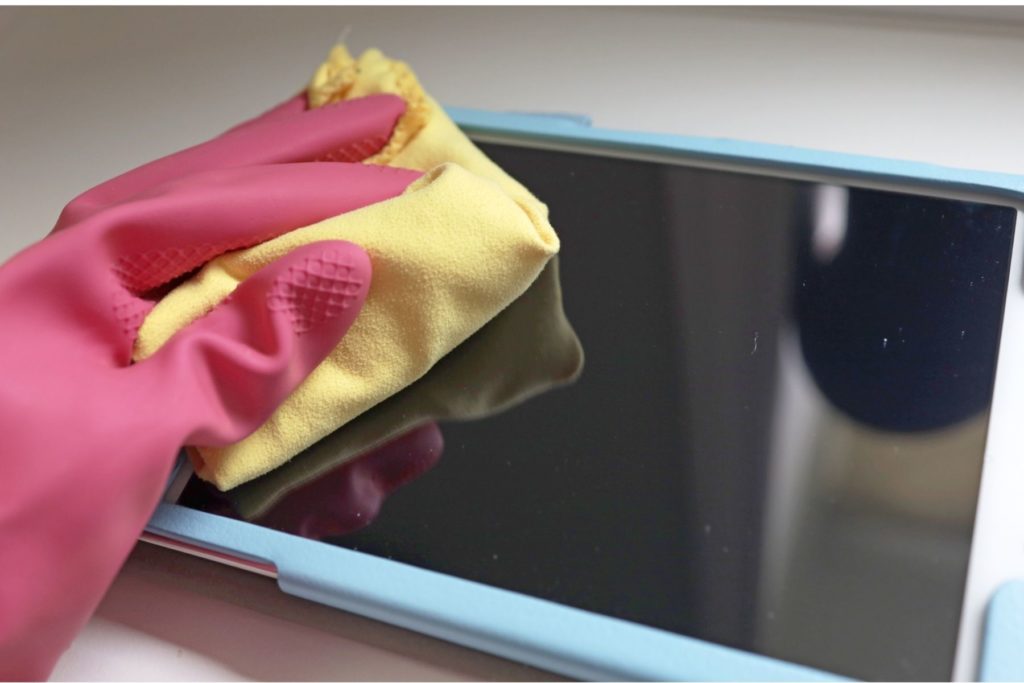A lint free cloth is a special type of cloth that does not leave fluff when you are cleaning electrical appliances, furniture, glass, or a car’s interior with it. The good thing about these clothes is that they don’t leave scratches when you wipe them on different surfaces and do a good job at removing debris.
Benefits Of Lint-Free Cloth
There are several benefits of using lint-free clothes:
- They do not leave scratches on sensitive surfaces like glass or a TV screen
- Fluff can build static charge over a surface and this can be harmful to your electrical components. Since lint free clothes do not have any fluff and they do not produce any static charge on rubbing, they are considered safe to use for electric components.
- Lint-free cloths are good at trapping dust and debris particles and give a cleaner look to surfaces without any leftover fluff
- Lint-free cloths are safe to use on dry sensitive surfaces and prevent contamination because they don’t leave any leftovers.
How to tell a good lint free cloth.
There are a lot of different types of lint-free clothes available on the market. But to tell if a lint-free cloth is good or not you have to check its composition. It is best to avoid a cleaning cloth made from cotton. Cotton is not a lint-free material because it has little fibers that can detach from its surface when you are cleaning, which can cause fluff to build up. But if you still want to use cotton, then non-shedding cotton or tight weave cotton is a good option as it has less lint.
Polyester is the best material for lint-free clothes. It can clean different surfaces without contamination or leaving behind any lint. You can alternatively use nylon and foam. They are suitable for cleaning sensitive surfaces as they are soft.
How to use a lint free cloth

Lint free cloths are durable, and unlike disposable towels, they can be used for cleaning TVs, electrical components, furniture, glass, and other sensitive surfaces over and over again. How you should use a lint-free cloth depends on what type of surface you are cleaning.
- For stains: Apply stain removing bar or liquid on the stained area, and wipe it using a wet lint-free cloth. For strong stains, use warm water.
- For Dust and Dirt: You can simply use water or a surface cleaner and wipe a lint-free cloth on your tables, windows, or kitchen counters to remove dust and dirt.
- Drying dishes: Use a lint-free to dry dishes and glass crockery
- Ironing: You can place a lint-free cloth between your iron and delicate fabrics or other materials to protect from excess heat
- Remove bad smells: Dampen a lint-free cloth in vinegar and use it on items which have caught bad scents. Lint-free cloths are also suitable to deodorize glassware.
Best Examples Of Lint-Free Cloths.
Materials used to make lint free clothes.
Lint-free cloths are made with different types of materials:
- Polyester
- Nylon
- Micro denier
- Cotton
- Cellulose/Polyester
- Foam
- Polypropylene/Cellulose
How to wash and dry lint free cloth
Lint-free clothes can be used over and over again for cleaning. This means they can get dirty and should be washed after you are finished cleaning.
You can wash a lint-free cloth by hand or using a washing machine.
If you are washing it by hand, simply immerse the cloth in warm or cool water, scrub it until all the dirt is removed completely, and then hang it to dry. Or you can toss it into a washing machine using a warm or cool setting without using a detergent and tumble dry it.
[fvplayer id=”3″]
How to Prevent Lint on Clothes
Clothes, especially woolen ones, can get unwanted lint which can give them a bad fluffy look. Fiber clusters can form over clothes because of the garment’s material itself or from other garments it might have come in contact with in the wardrobe.
Although you cannot completely stop lint from forming on clothes, following some important laundry tips will definitely prevent it considerably and keep your clothes lint-free for longer.
- Separate your laundry: Some clothes attract lint more than others, so it is a good practice to separate materials that produce lint. Things like woolen towels and items that shed lint should be kept away and washed separately.
- Clean your washing machine: Lint can accumulate in your washing machine’s filter if you do not clean it regularly. This lint can cling on your clothes after you put them in the washing machine. Always make sure you clear the filter after every wash cycle.
- Softening fabric conditioner: When you rub clothes with hands or spin them in a washing machine, some lint can shed due to the friction. A softening fabric conditioner decreases the friction and therefore the amount of lint shed is also reduced.
- Avoid using excess detergent: Too much detergent can make your clothes fluffy. Read the wash instructions label and always use high-quality detergents that clear lint.
- Turn clothes inside-out: Clothes that shed more lint should be turned inside out and then washed to reduce shedding. Also turn out the pockets and remove any lint before washing with other clothes to prevent lint from getting on other clothes.
Uses for lint-free cloth
Lint-free cloths do not give up any fluff or waste which makes them suitable for a variety of purposes where we want to avoid scratching the surfaces or contaminating them from any leftovers.
Lint-free cloths can be used for:
- Staining wood
- Cleaning glass
- Cleaning your computer or electronic components
- Waxing cars and interior cleaning
- Oiling wood
- Seasoning cast iron cookware
- Waxing furniture and finishing
- Cleaning mirrors and windows
- Drying sensitive crockery
Replacement ( or alternatives ) for lint-free cloth
If you can’t get a lint-free cloth then you can use alternatives like a paper towel or a coffee filter. Though they are not as good as lint-free clothes when it comes to giving up fluff, they can do some basic cleaning jobs. You can also use a normal bathroom towel or a dish towel since they are soft and can prevent scratching the surface.

Author: Saleh Ibrahim
